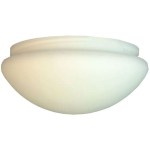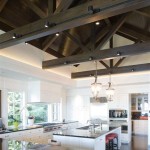Essential Aspects of In-Ceiling Lighting Design
In-ceiling lighting is a versatile and elegant lighting solution that can enhance the ambiance and functionality of any room. Whether you're designing a residential or commercial space, it's crucial to consider the following essential aspects for a successful in-ceiling lighting design.
1. Purpose and Function
Determine the primary purpose of the lighting system. Is it for general illumination, task lighting, or accent lighting? Different types of in-ceiling fixtures, such as recessed downlights, pendant lights, or chandeliers, serve specific functions and should be chosen accordingly.
2. Placement and Spacing
Consider the size and layout of the room when planning the placement of your in-ceiling lights. Fixtures should be evenly distributed to ensure adequate illumination without creating glare or dark spots. The spacing between lights depends on factors like ceiling height, fixture type, and beam angle.
3. Fixture Selection
Choose in-ceiling fixtures that complement the style and architecture of the room. Recessed downlights are known for their versatility and can be used in a variety of settings. Pendant lights can add a decorative touch, while chandeliers provide a statement piece. Consider the size, shape, color, and material of the fixtures.
4. Beam Angle and Distribution
The beam angle of an in-ceiling light determines the area and intensity of illumination. Wide-beam fixtures provide a more diffused light, while narrow-beam fixtures create a more focused beam. Consider the desired light distribution and the height of the ceiling when selectingfixtures.
5. Lighting Controls
Incorporate lighting controls to enhance the functionality of your in-ceiling lighting system. Dimmers allow you to adjust the light level to create different atmospheres. Motion sensors can automatically turn lights on when someone enters a room, providing convenience and energy efficiency.
6. Energy Efficiency
Consider the energy efficiency of your in-ceiling lighting fixtures. LED lights are known for their long lifespan, low energy consumption, and excellent color rendering. By opting for energy-efficient lighting, you can reduce energy costs and contribute to sustainability.
7. Professional Installation
Proper installation is essential for ensuring the safety and longevity of your in-ceiling lighting system. Hire a qualified electrician to handle the installation, as it involves electrical wiring and potential ceiling modifications. Professional installation ensures code compliance and prevents electrical hazards.
By carefully considering these essential aspects, you can design an in-ceiling lighting system that meets your functional needs, enhances the aesthetics of your space, and creates a comfortable and inviting environment.

9 Ceiling Light Designs For Home 2024

A Comprehensive Guide To The Best Ceiling Lights Designs For Your Home

Top 3 Ideas To Light Up Your Ceiling Saint Gobain Gyproc

45 Ceiling Lights Ideas For Home Office

30 Bedroom Ceiling Lights Ideas To Make Your Room Look Elegant

Ceiling Light Design Ideas For Your House

Top 3 Ideas To Light Up Your Ceiling Saint Gobain Gyproc

9 Types Of False Ceiling Light Designs To Glam Up Your Home

Ceiling Lights Design For Hall Mabel Lamp Smartway Lighting
Planning Your Ceiling Lighting Design Architecture
Related Posts








